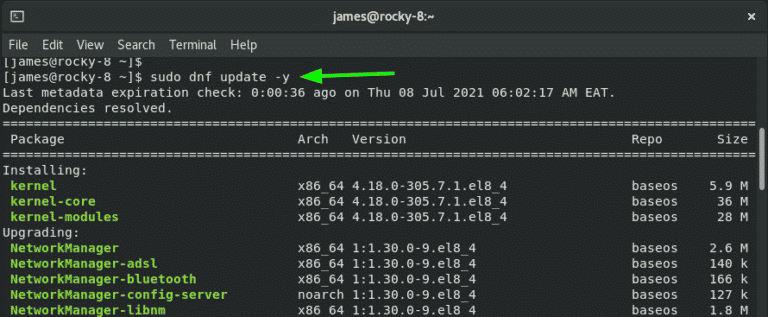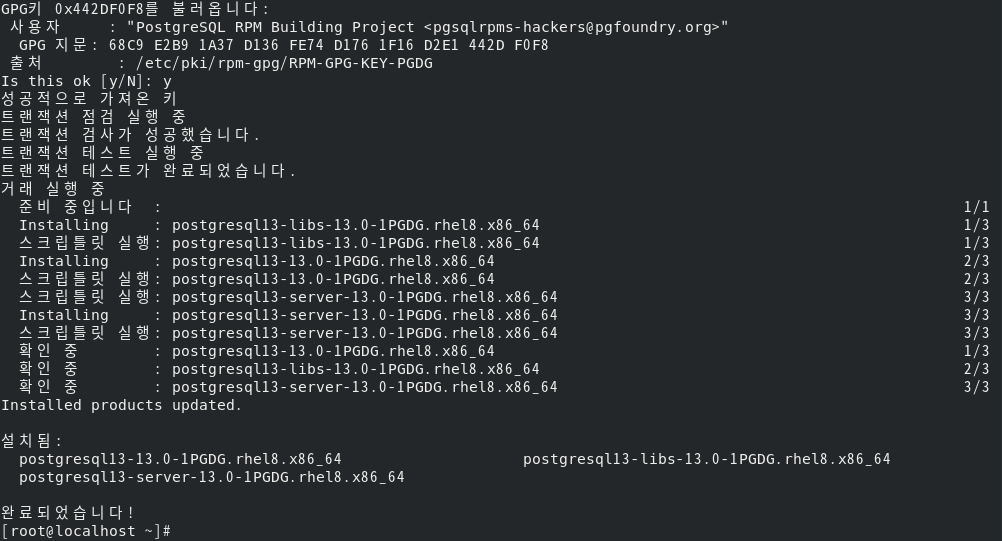
#Pgdg redhat repo update

#Pgdg redhat repo verification
If you'd like to turn off curl's verification of the certificate, use Problem with the certificate (it might be expired, or the name might The bundle, the certificate verification probably failed due to a If this HTTPS server uses a certificate signed by a CA represented in If the defaultīundle file isn't adequate, you can specify an alternate file Of Certificate Authority (CA) public keys (CA certs). * Peer certificate cannot be authenticated with known CA certificatesĬurl: (60) Peer certificate cannot be authenticated with known CA certificatesĬurl performs SSL certificate verification by default, using a "bundle" * Certificate is signed by an untrusted issuer: 'CN=Go Daddy Secure Certificate Authority - G2,OU=", Inc.",L=Scottsdale,ST=Arizona,C=US'

* CAfile: /etc/pki/tls/certs/ca-bundle.crt * Initializing NSS with certpath: sql:/etc/pki/nssdb Getting an error "curl: (60) Peer certificate cannot be authenticated with known CA certificates" when trying to curl a site that has a VALID SSL certificate ~]# curl -v That’s all from this post, please do post your queries and feedback on below comments section. Perfect, above output confirms that postgres user and database is secure now. This time it should prompt you to enter password first, $ su - postgres

Let’s try to switch to postgres user and connect to database. $ psql -c "ALTER USER postgres WITH PASSWORD ‘xxxxxxxxxxx' " Now to secure database, set password to postgres user using passwd command. 5) Securing PostgreSQL 15 Databaseīy default, postgresql database is not secure, one can easily switch to postgres user without any password and start using psql as shown below: To verify its service status, run $ sudo systemctl status postgresql-15Ībove output shows that postgresql service is up and running. Run the following systemctl commands to start and enable postgresql 15 service. To initialize PostgreSQL 15 initdb database, run $ sudo /usr/pgsql-15/bin/postgresql-15-setup initdb 3) Initialize PostgreSQL Database (initdb)

Now, let initialize its database in the next step. $ psql -VĪbove command’s output shows PostgreSQL 15.1 is installed on the system. Once postgresql and it’s dependencies are installed, verify its version using following psql command.
#Pgdg redhat repo install
$ sudo dnf install postgresql15-server -y In step 1, we have already configured PostgreSQL 15 package repository, so to install it, run the beneath dnf command. So, let’s first enable its DNF/yum package repository using following dnf command. PostgreSQL 15 is not available in the default package repositories of RHEL 9. 1) Enable PostgreSQL 15 Package Repository


 0 kommentar(er)
0 kommentar(er)
